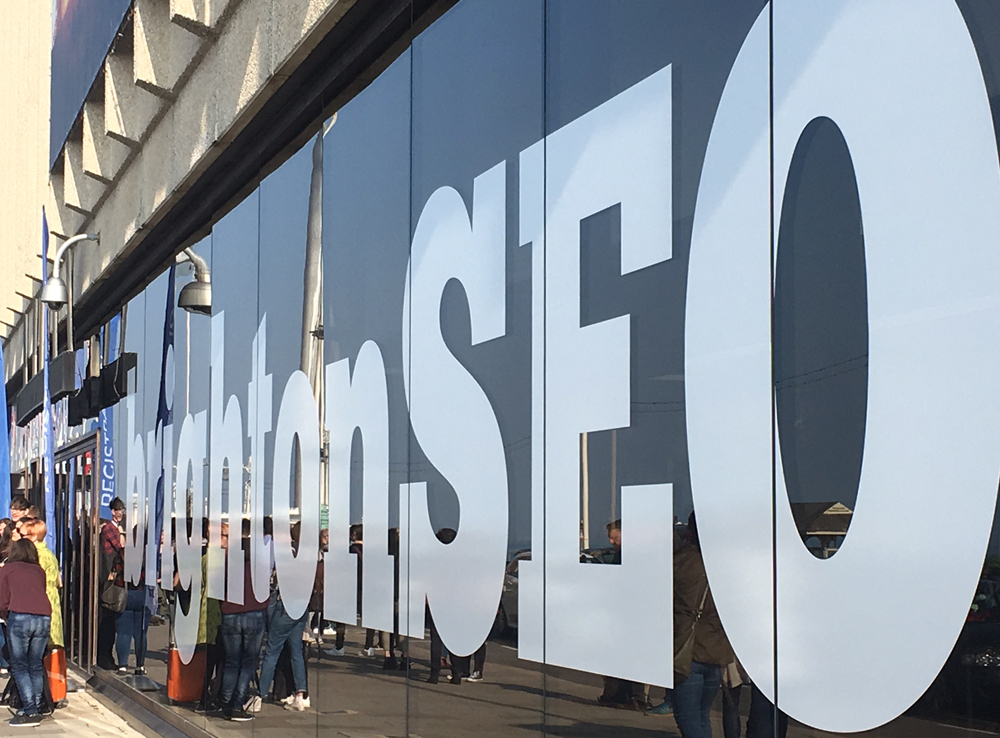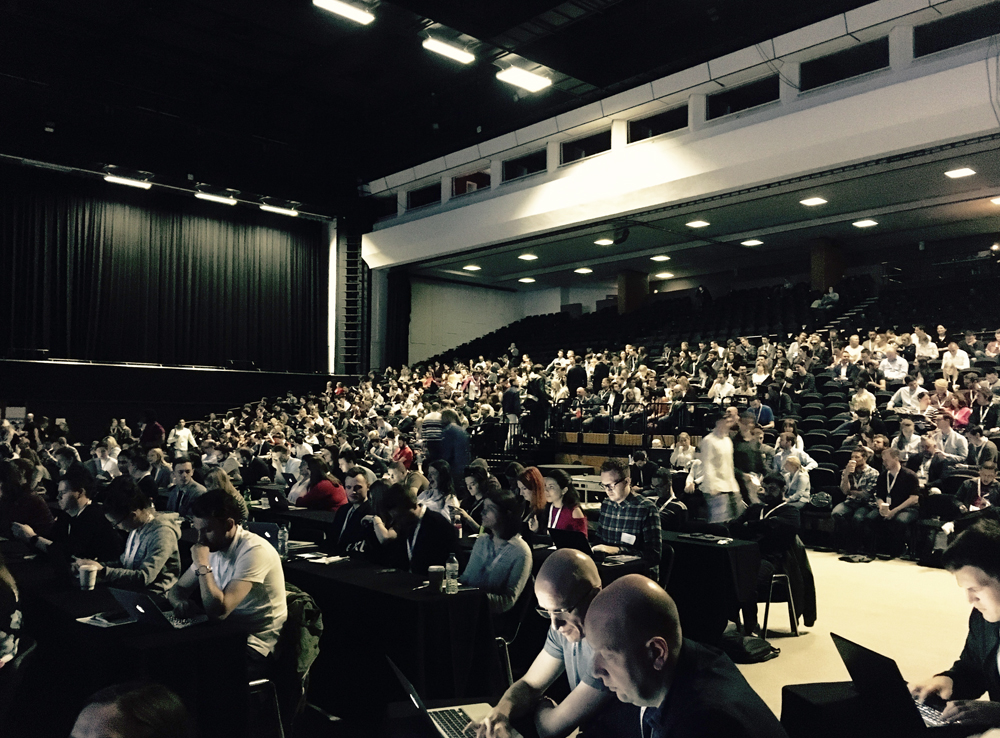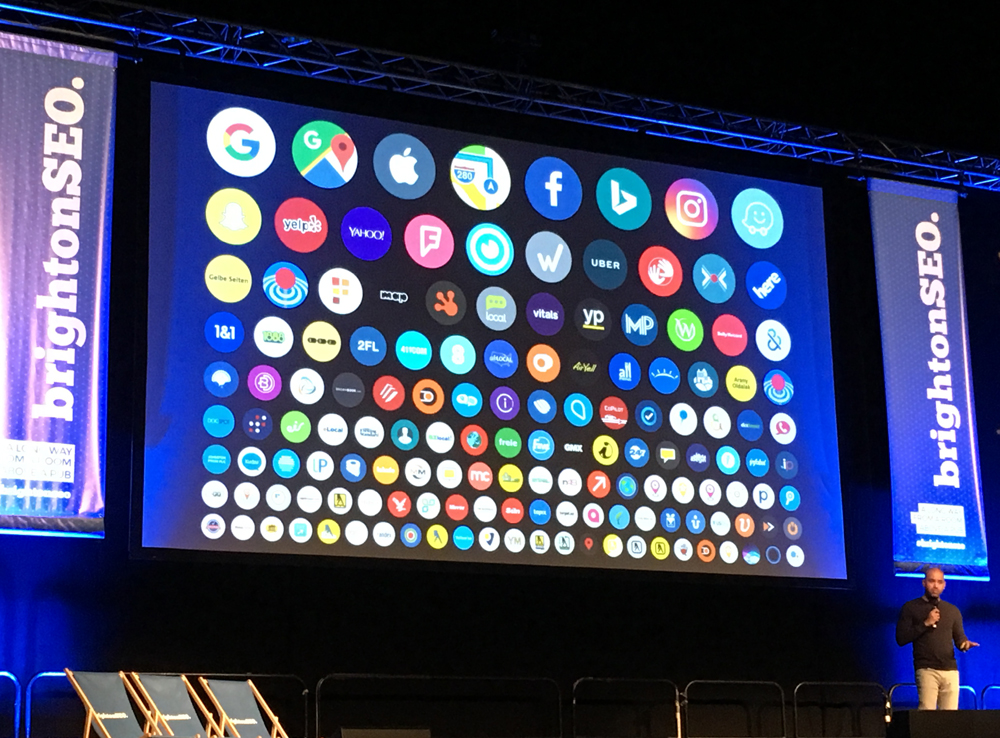Sunshine and Search at BrightonSEO

A fascinating day of search engine optimisation developments packed with expert views, insights and practical tips at BrightonSEO.
In this article, Cite’s very own content and SEO strategist, Alice Morgan, reports on her recent trip to attend BrightonSEO, bringing back the essence of the event, as well as some of the inspiring developments she heard.
What is BrightonSEO?
It’s the UK’s most important search marketing event that takes place, as its name suggests, in Brighton twice a year. Last Friday’s event attracted more than 3,500 people from all over the world, who came to listen to some to some of the best speakers in the industry.
You may well be asking how – given that SEO is such a broad church – one event can cater for all the different disciplines and backgrounds that are represented.
The answer is BrightonSEO’s 25 different sessions (each consisting of three short talks) across the day in five time slots. You have to make choices since – and the irony here was not lost on me – the organisers use a classification system that helps you crawl the agenda and find what’s most relevant to you.

In all, I watched 15 different talks in five sessions. So, what did I learn at BrightonSEO?
Here are my top search engine optimisation take-aways
1. Voice Search, the Knowledge Graph & the importance of structured data
ComScore predicts that by 2020, 50% of all queries will be voice search thanks to voice activated software like Siri and devices like Amazon Alexa, Google Home and – coming soon – Samsung’s Bixby. All work on a question and answer basis.
Voice search is driving a huge shift in organic search because queries are now actual questions. Google, Bing, Apple and all the rest (see image, below) provide users with answers based on structured data that brand owners and their customers originate. Some of this is factual – for example, “where’s the nearest vegan restaurant?” (well, it was Brighton…) – but there is also a qualitative overlay – “where’s the best vegan restaurant near me”. It begs the question, who decides what’s best?

What does this mean for brands?
- Structured data. Be in control of the authority of the data you contribute to the Knowledge Graph (this is a knowledge base used by Google to enhance its search results with semantic-search information gathered from a wide variety of sources).
- Nurture reviews. The star rating really matters and is used to answer questions with a qualitative element in them – see above.
Where is this going?
In the not-too-distant future, it will be possible to say to Alexa – or whatever replaces it – “Get me a car”. Then you’ll tell the (driverless) car to “Take me to the best vegan restaurant”. You won’t have done any research yourself and your opinion will matter only when it comes to reviewing the experience you have had. You’ll be trusting the structured data that others – including the vegan restaurant itself – provided. Artificial Intelligence is creeping up on us, and it’s here to stay.
2. Visual search, VR, AR and holograms
Sometimes we just haven’t got words to describe what it is we’re looking for. And, if you think about it – which is exactly what Microsoft’s Purna Virji made us do for 25 minutes – the technology we carry around with us all day long means we don’t really need to try.
We’ve all heard about Augmented Reality (AR) and Virtual Reality (VR), and these and other immersive, much-heralded image-based technologies will find their way into our normal lives. I’m not saying we’re all going to rush out and buy VR headsets – these will typically be in-store – but pretty soon we may find it normal to use Amazon’s visual search when we want to purchase something we can’t name verbally or in writing but can describe with a photograph.
This trend will continue and we – as digital marketers – need to be ready. Why? While Millennials express themselves through text, Generations Y and Z are doing so with pictures. It will change e-commerce, especially in fashion, as customers will be able to use the technology to visualize – for instance – what a pair of jeans will look like on them, what colour lipstick is right for them, and so on. In the United States, where this type of technology is starting to gain traction, it has noticably cut the return rate for e-commerce fashion brands.
Things to look out for
- HoloLens. Yes, for this medium eyewear is needed because this technology projects holograms of products into your field of vision. Need a new chair for your living room? You can now visualize it in the spot in your living room where you think it should go, change the upholstery fabric and – when you’re happy with it – order it, all by using gestures in thin air.
- The Blippar app. It turns ordinary looking OOH advertising (Out-of-home media advertising) into immersive, interactive experiences that are all these and more: entertaining, actionable and relevant. I really find this media fascinating, because OOH is enjoying something of a renaissance and this development shows the medium has a whole lot further to go. Watch the (ad) space…
3. Still got to tell a story!
Close to my heart, this one. Despite the digital revolution and all its disruption, storytelling is still as relevant as ever. It’s just that the platforms have changed, and continue to change. As content marketers, what we have at our disposal now can help us to write stories and create experiences which really do resonate with our audience around topics they – despite AI – continue to search for.
Top tips from Brighton SEO
Discover content and build personas
Use tools to discover audience preferences and to discover content opportunities:
- Facebook audience insights. This is a free tool which will help to identify (using all the data that Facebook users freely provide) gender, age, relationship status and interest information.
- YouGov profiles do much the same, but you can also overlay hobbies, niche interests and more.
- From here, create your audience personas
Unlock motivations
Apply what we know about these groups and their motivation to define possible pain points and micro-moments: the “I want to know/do/buy” moments. Think of pertinent questions that tap into this methodology. If possible, we need to provoke some sort of emotional response.
Overlay external factors
Apply seasonal activities, the wider marketing plan, commission surveys to get unique insights – and add some original ideas too.
Distribute
Identify influencers, and what they’re interested in; build relationships, ask for feedback and identify value exchange opportunities. Very often, bloggers and journalists are desperate for valuable content to publish.
Measure
This of course is key. We need to know whether our content was successful. This is a huge topic and crosses over with the latest Advanced Google Analytics training I attended the day before. It’s also important to measure things like link uptake and citations, using platforms such as Majestic SEO, MOZ, SEMRush and Hitwise.
Brighton SEO in summary
There was so much more to the day than what I’ve outlined here, including:
- How customer experience is now a key ranking factor
- How SERP clicks and CTR are also part of the algorithm
- How to rank in position zero
- Best practice for website migration
Above all, I learned this: we all need to be open to – and ready for – change. Oh, and now I understand why this event takes place twice a year!



